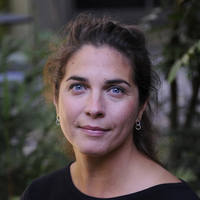
25 Genomes for 25 Years
About
The 25 Genomes for 25 Years project brought together a wide range of experts from a diverse range of research fields and organisations.
Outcomes
We hope that the provision by the Sanger Institute of reference genomes for 25 previously unsequenced UK species will lead to significant follow-on studies in population genetics, evolution studies, biodiversity management and conservation, and climate change effects.
Method
The Sanger Institute will perform DNA extraction, sequence using PacBio and Illumina X to 50x depth, perform 10x Chromium analysis, assemble the genomes and perform basic annotation.
Introductory video
Data use policy
The Wellcome Sanger Institute are committed to the principles of rapid data release. The 25 Genomes Project releases sequence data, assemblies, transcriptomes and other variant calls as a service to the research community. These data are released in accordance with the Fort Lauderdale and Toronto agreements, following Sanger Institute policies. The Sanger Institute and our collaborators intend to publish the results of our analysis of this dataset and do not consider its deposition into public databases to be the equivalent of such publications. The Wellcome Sanger Institute reserves the right to first publication. We strongly encourage researchers to contact us if there are any queries about referencing or publishing analyses based on pre-publication data from this project.
The 25 genomes
The 25 genomes represent five key areas of biodiversity in Britain.
Cryptic
Species that are out of sight, or have identical forms that are different in behaviour.

Brown Trout
Latin name: Salmo trutta
The brown trout has three isoforms that differ in their migratory patterns, for no apparent reason
Research partners: Mark Ives, Fisheries and Aquaculture Scientist at CEFAS (Centre for Environment, Fisheries and Aquaculture Science), Professor Sigbjørn Lien, Research Director, Norwegian University of Life Sciences (NMBU), and Professor Paulo Prodohl School of Biological Sciences – Professor of Ecology, Evolution, Behaviour and Environmental Economics, Institute for Global Food Security, Queen’s University Belfast
 Common Pipistrelle Bat
Common Pipistrelle Bat
Latin name: Pipistrellus pipistrellus
Two species of this the common pipistrelle bat co-exist, the genetics of which have not been determined
Research partners: Emma Teeling, Associate Professor at UCD Dublin and Manuel Ruedi, Curator (mammals and ornithology) at the Natural History Museum of Geneva
 Carrington’s Featherwort
Carrington’s Featherwort
Latin name: Plagiochila carringtonii
Male Carringon featherworts are exclusively found in Scotland, while the females are in the Himalayas
Research partner: Neil Bell, Bryology Research Scientist at the Royal Botanical Garden Edinburgh
Video about the work
 Summer truffle
Summer truffle
Latin name: Tuber aestivum
Summer Truffles grow underground and are some of the most expensive of all edible fungi. Known as mycorrhizal, these fungi form a symbiotic association with a host plant on which they are dependent throughout their lifecycle.
Research partner: Dr Paul Thomas, MD and Scientific Manager, Mycorrhizal Systems Ltd
Dangerous
 Giant Hogweed
Giant Hogweed
Latin name: Heracleum mantegazzianum
Giant Hogweed has been called Britain’s most dangerous plant by UK newspapers. Its sap is highly toxic and can cause blistering of the skin following exposure to sunlight. The plant originates from Southern Russia and Georgia and was widely planted in ornamental gardens in the 1890s. It can grow more than 3 metres tall with flower heads up to 60cm wide.
Research partner: Sakshi Sharda, Ecole Polytechnique federale de Lausanne, Switzerland

Indian Balsam
Latin name: Impatiens glandulifera
A difficult to control invasive plant species spreading across the UK
Research partner: Lisa Outhwaite, Senior Gardener, Grounds team at the Wellcome Genome Campus
 King Scallop, Great Scallop, Coquilles Saint-Jacques
King Scallop, Great Scallop, Coquilles Saint-Jacques
Latin name: Pecten maximus
Some king scalllops harbour a dangerous toxin secreting bacteria
Research partner: Suzanne Williams, Head of Invertebrate Division at the Natural History Museum
 New Zealand Flatworm
New Zealand Flatworm
Latin name: Arthurdendyus triangulatus
This invasive species is a predator of UK earthworms
Research partners: Roy Neilson, Researcher at the James Hutton Institute and Rene Van der Wal, Professor of Ecology at the School of Biological Sciences at the University of Aberdeen and OPAL (Open Air Laboratories) at Imperial College London
Floundering
Endangered and declining species.
 Red Squirrel
Red Squirrel
Latin name: Sciurus vulgaris
The 25 genomes for 25 years project may help reveal the genetic basis of the red squirrel’s vulnerability to the squirrelpox virus
Research partners: Rachel Cripps, Red Squirrel Officer, The Wildlife Trust for Lancashire, Manchester and North Merseyside, and Kat Fingland, Academic Associate, School of Animal Rural & Environmental Sciences (Nottingham Trent University)
 Water Vole
Water Vole
Latin name: Arvicola amphibius
Understanding the genome of the water vole may help with population conservation management efforts
Research partner: Angus Carpenter, Head of education, training, research and conservation at the Wildwood Trust
Video about the work
 Turtle Dove
Turtle Dove
Latin name: Streptopelia turtur
Studying the genome of the turtle dove may help with efforts to preserve the genetic diversity of the dwindling population
Research partners: Jenny Dunn, Lecturer in Animal Health and Disease at University of Lincoln and John Mallord, Senior Conservation Scientist at the RSPB (Royal Society for the Protection of Birds)
 Northern February Red Stonefly
Northern February Red Stonefly
Latin name: Brachyptera putata
The genome of the Northern February red stonefly may help identify the genetic determinants of its need to live in its niche habitat
Research partner: Craig Macadam, Conservation Director at Buglife
Flourishing
Species on the up in the UK.
 Grey Squirrel
Grey Squirrel
Latin name: Sciurus carolinensis
This squirrel harbours the squirrelpox virus with apparently no ill effects
Research partner: Graham Smith, Head of Wildlife Epidemiology and Modelling at the Animal and Plant Health Agency
 Ringlet Butterfly
Ringlet Butterfly
Latin name: Aphantopus hyperantus
The ringlet butterly can fly in overcast skies and has a dwarf variety at higher altitutes
Research partner: To be announced
 Roesel’s Bush-Cricket
Roesel’s Bush-Cricket
Latin name: Metrioptera roeselii
This species is now spreading out of it’s usual salty habitats, is there a genetic change that has allowed this?
Research partners: Peter Sutton, Science Teacher at Redbourne Upper School and Björn Beckmann, Outreach and Recording Officer at the Centre for Ecology and Hydrology
 Oxford Ragwort
Oxford Ragwort
Latin name: Senecio squalidus
This plant has some intersting reproduction habits and unknown species origin
Research partner: Lisa Outhwaite, Senior Gardener, Grounds team at the Wellcome Genome Campus
Iconic
Species that represent the British countryside.
 Golden Eagle
Golden Eagle
Latin name: Aquila chrysaetos chrysaetos
There are only 440 breeding pairs of golden eagle left in the UK
Research partners: Rob Ogden, Head of Conservation Genetics, Royal (Dick) School of Veterinary Studies (Edinburgh) and Anna Meredith, Personal Chair of Zoological and Conservation Medicine, Royal (Dick) School of Veterinary Studies
 Blackberry
Blackberry
Latin name: Rubus ulmifolius
The blackberry is ubiquitous in the UK, yet it is understudied
Research partners: Professor Mario Caccamo, Managing Director of NIAB EMR, Dr Felicidad Fernadez (NIAB EMR), Research Leader at NIAB EMR, Dr Hamid Ashrafi, Assistant Professor in Horticultural Science at NC State University, Dr Nahla Bassil, Plants Geneticist, National Clonal Germplasm Repository, Corvalllis, Oregon, USDA-ARS, Dr Michael Dosset, Research Scientist at BC Berry Cultivar Development Inc, Dr Margaret Worthington, Assistant Professor, Director Experiment Station, Horticulture, University of Arkansas, and Lisa Outhwaite, Senior Gardener, Grounds team at the Wellcome Genome Campus
 European Robin
European Robin
Latin name: Erithacus rubecula
European robins have magneto-receptors in their eyes that may allow them to ‘see’ magnetic fields
Research partners: Derek Gruar, Senior Research Assistant, Conservation Science at the RSPB (Royal Society for the Protection of Birds) and Jenny Dunn, Lecturer in Animal Health and Disease at the University of Lincoln
Video about the work
 Red Mason Bee
Red Mason Bee
Latin name: Osmia bicornis
The Red Mason Bee is about the size of a honeybee, but unlike honey bees they are solitary, with the females making nests in empty holes or stems of plants. These bees also prefer slightly colder temperatures which may result in them struggling in future due to climate change.
Research partner: David Notton, Senior curator (Insects division) at the Natural History Museum
Public vote
Five species were decided by a public vote through I’m a scientist get me out of here platform:
The five chosen by the public are:
 Common Starfish
Common Starfish
Latin name: Asterias rubens
Asterias rubens is the most common starfish species around the coast of the UK. An understanding of the adhesives starfish use to pull apart the mussels they feed on could lead to the development of novel bioadhesives for medical surgery. Whereas, the remarkable ability of starfish to regenerate their arms could provide important new insights in regenerative medicine.
 Fen Raft Spider
Fen Raft Spider
Latin name: Dolomedes plantarius
The fen raft spider is one of the UK’s rarest animals, but they’re coming back. After 6,000 spiders were released, monitoring shows that populations are on the up. Genomics could shed light on how they are coping, and reveal secrets of the spider’s venom that could be useful in medicine, and how its silk could help improve mechanical engineering.
Video about the work
 Lesser Spotted Catshark
Lesser Spotted Catshark
Latin name: Scyliorhinus canicula
The lesser spotted catshark’s egg-cases or ‘mermaid’s purses’ are frequently found along the UK coastline. Understanding the shark’s ability to regenerate teeth and skin could help us heal human wounds.
 Yellow-Legged Asian Hornet
Yellow-Legged Asian Hornet
Latin name: Vespa velutina
The Asian Hornet is an invasive species native to South East Asia, which is invading Europe at a rate of 100km every year. It is a voracious predator of insects, especially honeybees, and poses a negative impact on the beekeeping industry. Sequencing its genome could help in the design of specific pesticides to control its invasion, and give insights into social living in bees.
Video about the work
 Eurasian Otter
Eurasian Otter
Latin name: Lutra lutra
The Eurasian otter is a keystone species in the UK, but the population is listed as ‘Near Threatened’ on the IUCN Red List. Their position at the top of the freshwater food chain means otters serve as an environmental indicator species, and they can give clues about the pollution of their environment. Sequencing the otter genome will open the door for research into otters adaptations, parasites, scent communication and behaviour, and will ultimately help in protecting them.
Contact
If you need help or have any queries, please contact us using the details below.
Sanger people

Dr Richard Durbin
Associate Faculty

Dr Kim Judge
Bioinformatician

Dr Mara Lawniczak
Senior Group Leader

Dr Julia Wilson
Director of Strategy, Partnerships and Innovation
Previous Sanger people

Dr Matt Berriman
Former Senior Group Leader

Daniel Mead
25th Anniversary Sequencing Project Coordinator
External partners and funders
External
Mark Ives, Fisheries and Aquaculture Scientist at CEFAS
Working the the Sanger Institute on the brown trout genome
External
Neil Bell, Bryology Research Scientist at Royal Botanical Garden Edinburgh
Working with the Sanger Institute on the Carrington's featherwort genome
External
Emma Teeling, Associate Professor at UCD Dublin
Working with the Sanger Institute on the common pipistrelle bat genome. Her bat lab is at: http://batlab.ucd.ie/
External
Manuel Ruedi, Curator (mammals and ornithology) at Natural History Museum of Geneva
Working with the Sanger Institute on the common pipistrelle bat genome. The museum's website is at: http://www.ville-geneve.ch/themes/culture/english/
External
Derek Gruar, Senior Research Assistant, Conservation Science at the RSPB
Working with the Sanger Institute on the European robin genome
External
Jenny Dunn, Lecturer in Animal Health and Disease at University of Lincoln
Working the Sanger Institute on the European robin and turtle dove genomes
External
Graham Smith, Head of Wildlife Epidemiology and Modelling, Animal and Plant Health Agency
Working with the Sanger Institute on the grey squirrel genome
External
Lisa Outhwaite, Senior Gardener of the Grounds team at the Wellcome Genome Campus
Working with the Sanger Institute on the blackberry, Oxford ragwort and Indian balsam genomes
External
Suzanne Williams, Head of Invertebrate Division at the Natural History Museum
Working with the Sanger Institute on the king scallop genome
External
Ian Kitching, Head of Insects Division at the Natural History Museum
Working with the Sanger Institute on the narrow bordered bee hawkmoth genome
External
Roy Neilson, Researcher at the James Hutton Institute
Working with the Sanger Institute on the New Zealand flatworm genome
External
Rene Van der Wal, Professor at the School of Biological Sciences, University of Aberdeen & OPAL (Open Air Laboratories)
Working with the Sanger Institute on the New Zealand flatworm genome. The OPAL website is: http://www.imperial.ac.uk/opal
External
Craig Macadam, Conservation Director at Buglife
Working with the Sanger Institute on the Northern February Red stonefly genome
External
Peter Sutton, Science Teacher at Redbourne Upper School, and part of Orthoptera & Allied Insects
Working with the Sanger Institute on the Roesel's bush-cricket genome
External
John Mallord, Senior Conservation Scientist at the RSPB
Working with the Sanger Institute on the turtle dove genome
External
Angus Carpenter, Head of education, training, research and conservation at the Wildwood Trust
Working with the Sanger Institute on the water vole genome
External
Björn Beckman, Outreach and Recording Officer at the Centre for Ecology and Hydrology, and member of Orthoptera & Allied Insects
Working with the Sanger Institute on the Roesel's bush-cricket genome. The Biological Records Centre website is at: https://www.brc.ac.uk/home
External
Rob Ogden, Head of Conservation Genetics, Royal (Dick) School of Veterinary Studies (Edinburgh)
Working with the Sanger Institute on the golden eagle genome
External
Kat Fingland, Academic Associate, School of Animal Rural & Environmental Sciences (Nottingham Trent University)
Working with the Sanger Institute on the red squirrel genome
External
Anna Meredith, Personal Chair of Zoological and Conservation Medicine, Royal (Dick) School of Veterinary Studies
Working with the Sanger Institute on the golden eagle genome
External
Rachel Cripps, Red Squirrel Officer, The Wildlife Trust for Lancashire, Manchester and North Merseyside
Working with the Sanger Institute on the red squirrel genome
External
I'm a scientist, get me out of here - 25 genomes project
Partnering with the Sanger Institute and the Wellcome Genome Campus Public Engagement team to run the public vote for five species to sequence
External
Deepak Singh, Vice President, EMEA, Pacific Biosciences (PacBio)
Supplying the 25 Genomes for 25 Years project with technology and technical consultancy
External
Jonas Korlach, Chief Scientific Officer, Pacific Biosciences (PacBio)
Supplying the 25 Genomes for 25 Years project with technology and technical consultancy
External
Mark Thornber, Sales Manager UK & Nordic, Pacific Biosciences (PacBio)
Supplying the 25 Genomes for 25 Years project with technology and technical consultancy
External
Wendy Weise, Head of Marketing Communications, Pacific Biosciences (PacBio)
Supplying the 25 Genomes for 25 Years project with technology and technical consultancy
External
Scott Brouilette, Regional Marketing Manager, Europe, Middle East & Africa, 10x Genomics
Supplying the 25 Genomes for 25 Years project with technology and technical consultancy
External
David Notton, Senior curator (Insects division) at the Natural History Museum
Working with the Sanger Institute on the red mason bee
External
Martin Donnelly, Professor of Evolutionary Genetics, Liverpool School of Tropical Medicine
Working with the Sanger Institute on the British mosquito
External
Wellcome Genome Campus Public Engagement team
Working with the Sanger Institute on the 'I'm a Scientist, Get Me Out of Here' engagement work
External
Professor Sigbjørn Lien, Research Director, Norwegian University of Life Sciences (NMBU)
Working with the Sanger Institute on the brown trout.
External
Professor Paulo Prodohl, Institute for Global Food Security, Queen's University Belfast
Working with the Sanger Institute on the brown trout.
External
Sakshi Sharda, Ecole Polytechnique federale de Lausanne, Switzerland
Working with the Sanger Institute on the giant hogweed.
External
Professor Mario Caccamo, Managing Director of NIAB EMR
Working with the Sanger Institute on the blackberry genome
External
Dr Felicidad Fernadez (NIAB EMR), Research Leader at NIAB EMR
Working with the Sanger Institute on the blackberry genome
External
Dr Hamid Ashrafi, Assistant Professor in Horticultural Science at NC State University
Working with the Sanger Institute on the blackberry genome
External
Dr Nahla Bassil, Plants Geneticist, National Clonal Germplasm Repository, Corvalllis, Oregon, USDA-ARS
Working with the Sanger Institute on the blackberry genome
External
Dr Michael Dosset, Research Scientist at BC Berry Cultivar Development Inc
Working with the Sanger Institute on the blackberry genome
External
Dr Margaret Worthington, Assistant Professor, Director Experiment Station, Horticulture, University of Arkansas
Working with the Sanger Institute on the blackberry genome
External
The DNA Zoo
The DNA Zoo is a consortium focused on facilitating conservation efforts through the rapid generation and release of high-quality genomics resources. Led by the Aiden lab, they are providing HiC data for the species and will aid in the production of the final genome assemblies.
Related groups
Affiliated Sites
External
Pacific Biosciences
External
